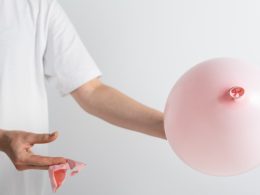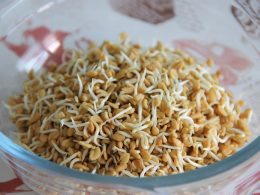Table of Contents
TMJ headaches and migraine headaches can both be chronic and painful. In extreme cases, these headaches will interfere with your day-to-day activities. Many people take over-the-counter medications to treat their pain. However, there are several other options you could try.
TMJ stands for temporomandibular joint. This is the joint in your face that connects the jaw with the skull. It’s a complex joint that moves both up and down and sides to side, which allows you to speak and chew your food. Because it’s so complex, though, the TMJ can sometimes become misaligned. When this happens, you may begin to experience headaches as a result.
It is often difficult to tell what causes TMJ headaches because it’s hard to distinguish them from a tension headache or other type of headache. Symptoms of TMJ headaches are tightness in the face or jaw and a clicking noise in the jaw. Some patients also experience restricted movement in the jaw. A change in the way the person bites their food could also be a sign of a TMJ headache.

Lifestyle Changes
Lifestyle changes are one way to help relieve both TMJ and migraine headaches. Because TMJ headaches are caused by problems with the TMJ, some patients feel relief by eating softer foods. Avoiding chewy foods could also help.
As for migraines, patients can see relief by getting plenty of sleep and eating healthier. Exercising regularly might also help. Avoiding stressful situations and headache triggers could help, too.
Relaxation Techniques
A third tip for relieving headache pain is to practice relaxation techniques. Some dentists will recommend soft exercises to relieve pain in the jaw. Some of these exercises are primarily for strengthening the jaw. In these, you’ll open or close your mouth against some gentle pressure, like your thumb under your chin.
While these are good for strengthening your jaw muscles, it’s best not to do them while you’re in a lot of pain, as it could increase that pain even more. Instead, do them when you’re experiencing less pain as a preventative measure against future pain.
Other exercises will be focused on stretching your jaw. Some areas simple as opening your mouth as wide as possible. Others focus on moving your lower jaw side to side or forward and backward. Stretching your jaw is a good thing to do when you’re experiencing a lot of pain or tension in your jaw. Like stretching cramping muscles, it can help the muscles in your jaw relax.
If you’re clenching your jaw due to stress, as many do, you may need to focus on relaxing your whole mind and body rather than just your jaw. Try laying down in a dark room and breathing deeply, focusing on relaxing each muscle individually.
TMJ Dentist
There are some dentists that specialize in TMJ pain relief. Because TMJ pain and headaches are often caused my jaw misalignments, a TMJ dentist will help you bring your jaw back into alignment. They may do this with orthodontic treatments like braces or Invisalign.
As the jaw comes back into alignment, the joint is put under less stress, reducing headaches, migraines, and other related pain. Alternatively, they may recommend surgery to fix the misalignment. However, this is seen as a last resort by most dentists, so it’s not usually recommended.
Pain Medication
A second thing that could help manage headaches is pain medication. Doctors will often prescribe tablets for migraines, and some dentists might recommend over-the-counter drugs for TMJ pain relief. However, it is not recommended that you take heavy pain relievers too often, as they can cause other side effects.
If you suffer from migraines or TMJ headaches, it is possible to find relief. As stated, lifestyle changes, stress relief practices and pain relievers can help you manage your headaches. In rare cases, patients undergo surgery. Consult with your doctor or dentist about your headaches.















